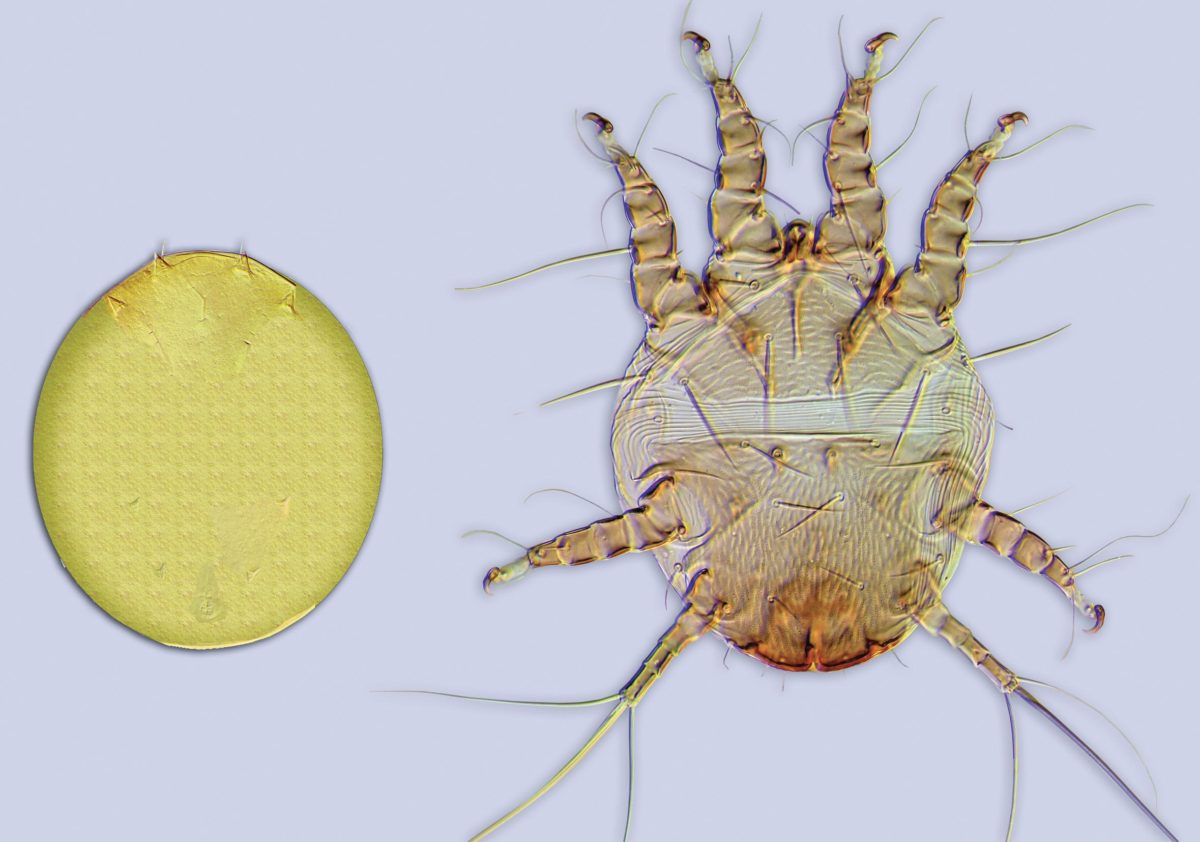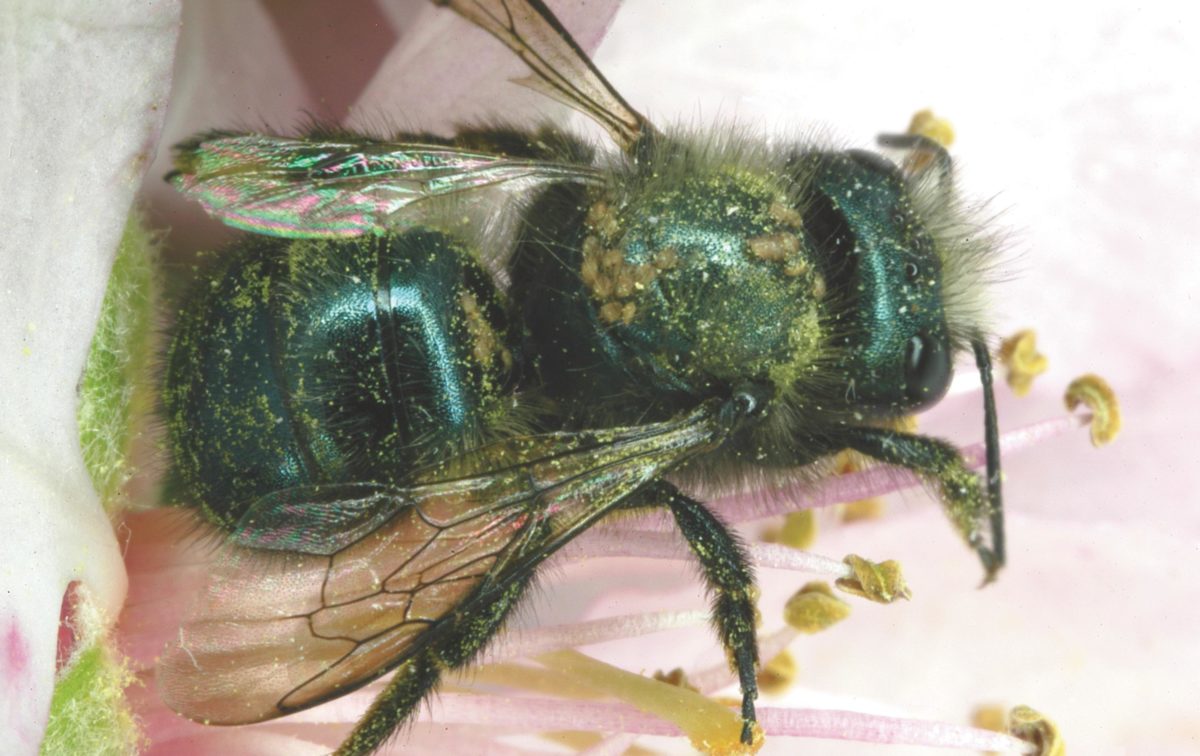
Currently, most mite problems involving cavity-nesting bees are associated with the so-called hairy-fingered mite (Chaetodactylus krombeini), a major native cleptoparasite of the blue orchard bee (Figure A.7). A related species, Chaetodactylus nipponicus, is considered a major pest of the hornfaced bee in Japan where it is blamed for 80 percent of all bee mortality, and annual yield losses of up to 30 percent, without treatment. Various mite species have also been associated with the alfalfa leafcutter bee, but little published information exists. Mites are not considered a major threat to leafcutter bee operations at this time due to the common practice of loose-cell management.
The hairy-fingered mite, sometimes called a pollen mite, is most commonly reported in humid climates, especially in coastal regions. The mites are typically white, yellow, or red, and are at first difficult to discern from individual pollen grains when viewing an infested nest.
Immature hairy-fingered mites feed on the pollen provisions within nest tubes, causing the developing bee to starve, and in some cases mites may even feed on the bee larva itself. Multiple generations can occur within an infested cell in a single season—a single mite for example can give rise to thousands of offspring packed into a single cell space. When such nests are opened and the contents shaken onto a surface, the movement of individual mites is soon noticed. Since the mites cannot break through the mud wall partitions of mason bee nests, they remain confined throughout most of the season.

Upon emergence, bees nesting deeper within the cavity are forced to climb through mite-infested cells. During this process, a migratory stage of the mite with long bristle-like legs (hence the common name), attaches itself to the thorax of the healthy bee (Figure A.8). Large numbers of these migratory nymphs can in some cases actually hinder the flight of emerging bees, although they do not directly attack adult bees.
During nesting, these mites are transported by the bees to newly provisioned cavities where the cycle repeats itself. Although adult bees will groom themselves to remove mites, it is difficult to completely eradicate them in a population once they are established (Figure A.9).
Effective control measures include annual phaseout and cleaning of old nest materials, and the disposal of contaminated nests. With high infestations, cocoons can be removed (loose-cell management), and submerged in a bleach-water solution (1:3 by volume) for about five minutes.

Japanese mason beekeepers have developed two control measures for Chaetodactylus mites: The first method involves heat treatment of hornfaced bee pre-pupae in late June, after cocoon spinning. Prepupae, which reportedly tolerate high heat at this stage, are exposed to temperatures of 86°F (30°C) for 30 to 40 days. Because the bees are in summer diapause they have little mortality, but the mites that are still active are killed.
The second Japanese control method involves treatment of nest materials with 60 ppm of the insecticide endosulfan (sold under the trade names Thiodan, Endocide, Beosit, Cyclodan, Malix, Thimul, and Thifor in the US). Bamboo or reed nests are diptreated prior to the nesting season with this method, or alternatively nest entrances are sometimes sprayed every two or three days during the nesting season. Note that no endosulfan product is currently labeled for this use in the US, and improper endosulfan applications will likely result in bee mortality.
Hairy-fingered mites, along with the fungal disease chalkbrood, are two reasons why untended drilled nest blocks should not be used to “encourage wild bee populations.”
